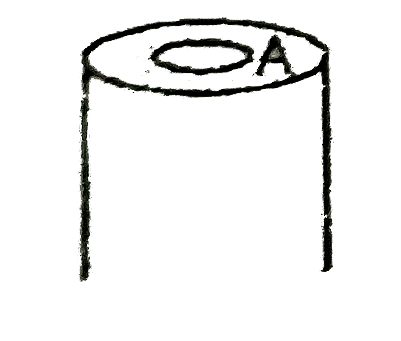A conducting cylindrical shell inner radius R1 maintained at a temperature T1 and outer radius R2 maintained at a temperature T2 respectively. Thermal conductivity of the shell varies with distance from the axis as K=αr2. where α is constant. The temperature as a function of distance R from the axis of the cylinder is
T1−(r2−R21)(T2−T1)R22−R21
T1+(r2−R22)(T2−T1)R22−R21
T1+(r2−R21)(T1−T2)R22−R21
T1+(r2−R21)(T2−T1)(R22−R21)
The correct Answer is:D
Topper's Solved these Questions
- TRANSMISSION OF HEATBOOK - AAKASH SERIESCHAPTER - TRANSMISSION OF HEATEXERCISE - PRACTICE SHEET (EXERCISE-I) Thermal Conduction (LEVEL-II) More than One correct answer Type Questions
2 Videos
- TRANSMISSION OF HEATBOOK - AAKASH SERIESCHAPTER - TRANSMISSION OF HEATEXERCISE - PRACTICE SHEET (EXERCISE-I) Thermal Conduction (LEVEL-II) Linked Comprehension Type Questions (Passage-II)
3 Videos
- TRANSMISSION OF HEATBOOK - AAKASH SERIESCHAPTER - TRANSMISSION OF HEATEXERCISE - PRACTICE SHEET (EXERCISE-I) Thermal Conduction (LEVEL-I) Straight Objective Type Questions
13 Videos
- TRANSMISSION OF HEAT BOOK - AAKASH SERIESCHAPTER - TRANSMISSION OF HEAT EXERCISE - QUESTION FOR DESCRIPTIVE ANSWER
4 Videos
- UNITS AND MEASUREMENTBOOK - AAKASH SERIESCHAPTER - UNITS AND MEASUREMENTEXERCISE - Practice Exercise
45 Videos
Similar Questions
A hole of radius r1 is made centrally in a uniform circular disc of thickness d and radius r2 . The inner surface (a cylinder of length d and radius r1) is maintained at a temperature θ1 and the outer surface (a cylinder of length d and radius r2) is maintained at a temperature θ2(θ1>θ2) .The thermal conductivity of the material of the disc is K. Calculate the heat flowing per unit time through the disc.
View SolutionAn infinitely long cylindrical shell ofinner radius r1 and outer radius r2 is charged in its volume with a volume charge density which varies with distance from axis of cylinder as p=blrC/m3 which C is a positive constant and r is the distance from axis of cylinder. Find the electric field intensity at a point P at a distance x from axis of cylinder
View Solution
Knowledge Check
Inner and outer surfaces of a cylinder are maintained at temperature 4T and T respectively. Heat flows radially from inner surface of radius R to outer surface of radius 4R. Radial distance from the center where temperature is 2T.
A2 RB25/3RC24/3RD3 RA cylinder A of a material of thermal conductivity K1 is surrounded by a cylindrical shell of inner radius equal to the cylinder. The shell is made of a material of thermal conductivity K2. The two ends of the combined system are maintained at two different temperature. if the effective thermal conductivity of the system is 4K1+5K29, find the rate of outer radius of the shell to the radius of the cylinder.
 A2.0B5/2C5/3D3/2
A2.0B5/2C5/3D3/2
A hole of radius r1 is made centrally in a uniform circular disc of thickness d and radius r2 . The inner surface (a cylinder of length d and radius r1 is maintained at a temperature θ1 and the oouter surface (a cylinder of length d and radius r2 . The is maintianed at a temperature θ2(θ1>θ2) .The thermal conductivity of the material of the dics is K. Calculate the heat flowing per unit time through the disc.
View SolutionCalculate thermal conductance for radial flow of an annular cylinder of length l and inner and outer radius r1 and r2. Assume that thermal conductivity of the material is K

View SolutionCalculate thermal conductance for radial flow of an annular cylinder of length l and inner and outer radius r1 and r2. Assume that thermal conductivity of the material is K

View SolutionCalculated thermal conductance for radial flow of a spherical sheel of inner and outer radius r1and r2. Assume that thermal conductivity of the material is K
View SolutionCalculated thermal conductance for radial flow of a spherical sheel of inner and outer radius r1and r2. Assume that thermal conductivity of the material is K
View SolutionA point charge Q is placed inside a conducting spherical shell of inner radius 3R and outer radius 5R at a distance R from the centre of the shell. The electric potential at the centre of the shell will be
View Solution
